ThinkPHP is a fast, compatible and simple lightweight domesticPHP development framework. Using ThinkPHP frameworkcan greatly simplify our development process and save time. . This article is for PHP Chinese to teach everyone a very important concept in ThinkPHP:Namespace.
ThinkPHP uses namespace definition andautomatic loading of classlibrary files, effectively solving the problem of multi-module and Composer Namespace conflicts between class libraries are solved, and a more efficient automatic loading mechanism for class libraries is implemented.
You can move to our php Chinese website course:Learn PHP programming namespace tutorial at your fingertips

Our php Chinese website Related video courses are also provided:Dugu Jiujian (5)_ThinkPHP5 video tutorial

1. Namespace is only valid for functions, classes, and constants (const-defined constants, non-define-defined constants).

What if we try to use define to define two constants with the same name?


1. Unqualified name access method
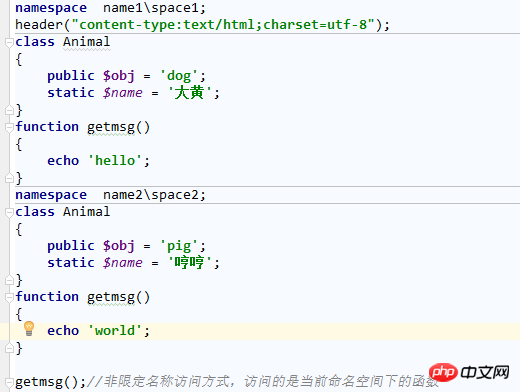
2. Fully qualified name access method
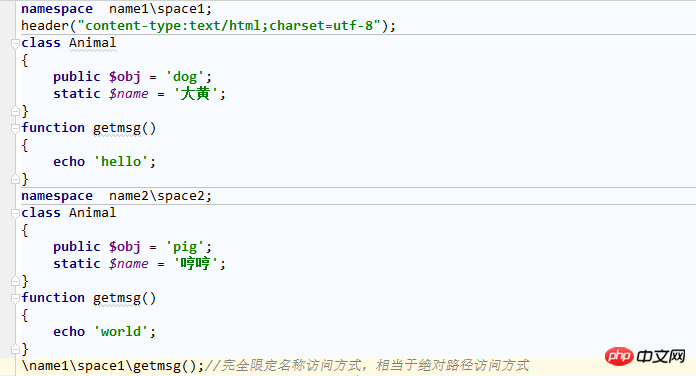
#So the output of the above code is: hello.
The difference between qualified name access method and fully qualified name access method is only in the first \ . If the above example uses qualified name access, change the last line to:name1\space1\getmsg();
At this time, we open it in the browser and find the following error:

Prompts that we cannot find the getmsg() function under the namespace name2\space2\name1\space1. The reason is thatLimited name access methodis equivalent to relative path access. We use qualified name access method to access under the current namespace: name1\space1\getmsg(), which will search for name1\space1 under the current namespace. The getmsg() function will report an error if it cannot be found. Therefore, if we declare another namespace named: name2\space2\name1\space1, the above access can be executed normally, as follows:
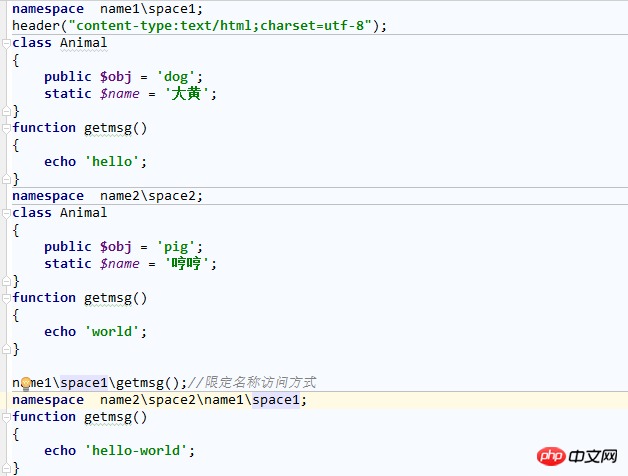
The output result is: hello -world.
Through the above example, we can see that if we want to use functions, constants or class elements in another namespace in the current namespace, we need to use fully qualified access to access and write code It is relatively cumbersome, so we can introduce a namespace and then use qualified name access to simplify the access process.
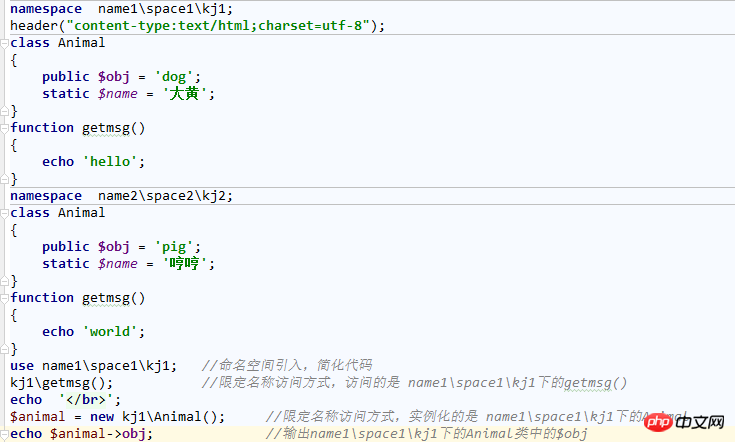
##The output result is: hellodog
Similar to the introduction of namespaces, use theusekeyword to introduce space elements, and then use unqualified access directly. Just visit. However, a class with the same name as the imported class cannot exist in the current namespace, otherwise an error will occur.
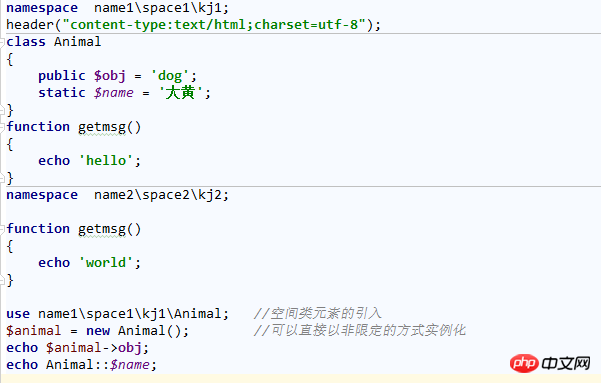
The output result is: dog rhubarb.
If we do not use thenamespacekeyword to declare a namespace, it belongs to the public space .
Here we create two php files, 1.php and 2.php, 1.php namespaceis name1\space1, 2.php is the public space .
1.php:
namespace name1\space1; header("content-type:text/html;charset=utf-8"); class Animal { public $obj = 'dog'; static $name = '大黄'; } function getmsg() { echo 'hello'; } const MN = 123; //在命名空间中引入公共命名空间 include ('./2.php'); getmsg(); //访问的是当前空间下的getmsg()函数 echo ''; \getmsg(); //访问的是公共命名空间(即2.php文件)下的getmsg()函数 echo ''; echo MN; //会先在当前命名空间下寻找MN常量,如果找到就输出,如果找不到,就会去公共命名空间寻找MN常量 echo ''; echo \MN; //访问的是公共命名空间(即2.php文件)下的MN常量
2.php:
//没有指定命名空间,则其属于公共命名空间 function getmsg() { echo 'world'; } const MN = '456';
world
123
456
In thinkphp5.0, the namespace is a virtual definition space, not a real directory. It's just that when the official declares the namespace, the name of the namespace deliberately corresponds to thedirectory structure.
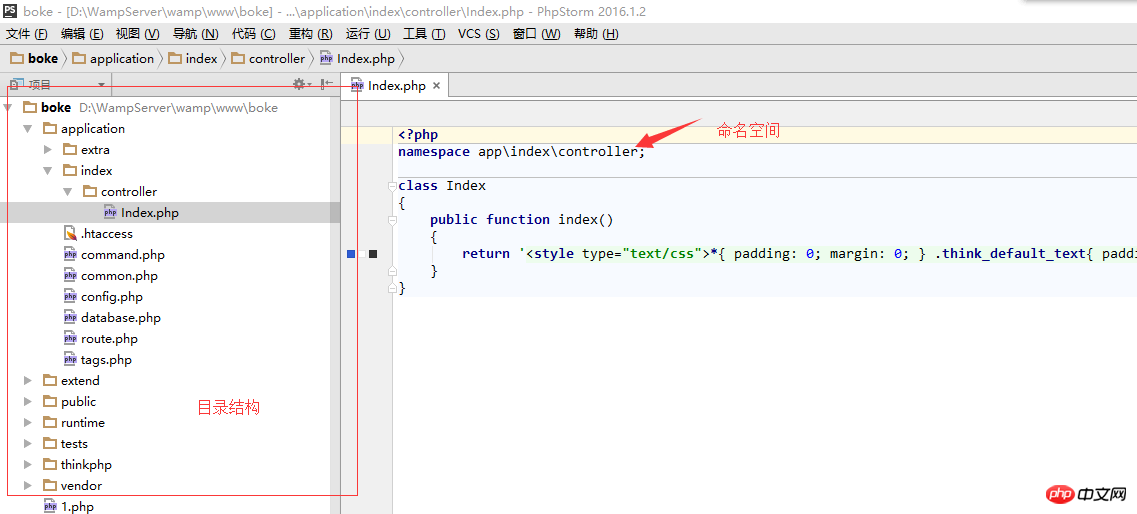
#For example, we open the Index.php file in the application/index/controller folder, and its namespace is:app\index\controller. does not exist in the directory structure.
Namespace alias
The framework allows you to define aliases for namespaces, for example:namespace app\index\model; use think\Model; class User extends Model { }
namespace app\index\controller; use app\index\model\User; class Index { public function index() { $user = new User(); } }
\think\Loader::addNamespaceAlias('model','app\index\model');
namespace app\index\controller; use model\User; class Index { public function index() { $user = new User(); } }
相关资料推荐:




